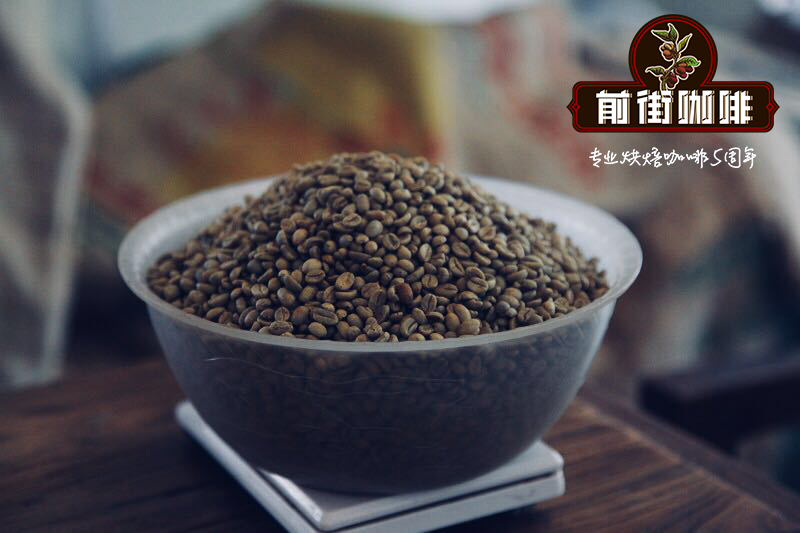What is Ethiopian DST? How do you make coffee from Pope Lim, Ethiopia?

Professional coffee knowledge exchange more coffee bean information please follow the coffee workshop (Wechat official account cafe_style)
If you take the capital Adis as the center, apart from Hala, most Ethiopian coffee is produced in the southwest and south of the capital.
Limu is in the southwest of Yiguo, not long from the capital. After leaving the city, you can see a road to the west, another to the producing area: Lekempti (Lekampi), and then to the southwest, another larger road is to Jimma, and Lim is between these two producing areas.
Most of Lim's coffee is washed with water, unlike Sidamo or Yegashev in that her acidity is bright but spicy, and her wine style is more or less one of her characteristics. Most of Lim's coffee is grown at a height of 1200 to 1900 meters.
Bright citric acid, body thick, oily coated upper jaw with spice irritation, obvious sweetness in the finish, sweet and sour taste of grapefruit and ripe citrus, excellent taste of ice drops or iced coffee in summer; leave the sour taste of water washing but softer, the taste still maintains a good clarity, it is well worth drinking! This lively and sour washed East African bean and rich ripe African beans have a distinct Kenyan wet flavor and citrus aroma.
Pope Coffee is screened, processed by a special processing plant for raw beans, processed at every stage from production, postharvest treatment to export, and packaged in plastic inner bags (Grainpro-lined bags) to ensure that excellent coffee is sold almost flawlessly.
Limu belongs to the southwest of Ethiopia, which is located between the two well-known producing areas of Djimma and Nekempte (Lekempti). It is located at high altitude and grows native varieties organically. Most of the coffee is washed and treated with water, which is different from Sidamo's washing beans or Yega Sheffield in that his acidity is bright but has a spice, and his wine style is more or less one of his characteristics. Coffee trees are shaded by ancient lush forest trees, and the trickle of natural springs flows through the supply of irrigation water.
DST (Direct Specialty Trade) system is an irregular Ethiopian auction, only through the SCAA cup test standard of more than 80 points of boutique coffee specialty coffee can hang its own name to trade with foreign raw bean merchants.
Tips on coffee hand flushing on the front street:
V60 filter cup, medium and fine grinding, ratio of water to powder 1:16, water temperature 88 Mel 90 °C
Other cooking suggestions:
Method pressure: medium grinding, ratio of water to powder 1:15, water temperature 87MUR 89 °C.
Siphon kettle: medium and fine grinding, ratio of water to powder 1:15, water temperature 87Mel 89 °C
Important Notice :
前街咖啡 FrontStreet Coffee has moved to new addredd:
FrontStreet Coffee Address: 315,Donghua East Road,GuangZhou
Tel:020 38364473
- Prev

Introduction to the characteristics of Lim Nichols Nema Farm Coffee in Lim Coffee area of Ethiopia
Professional coffee knowledge exchange more coffee bean information please pay attention to the coffee workshop (Wechat official account cafe_style) Limu) is in the southwest of the country, not long from the capital, out of the city can see a westward road, another to the name of the producing area: Lekempti (Lekampi), and then straight southwest, another larger road is to Jimma, and
- Next

Introduction to the characteristics and production time of coffee beans in Brazil the present situation of the production environment of the origin story of Brazilian coffee varieties
Professional coffee knowledge exchange more coffee bean information please follow coffee workshop (Wechat official account cafe_style) Coffee originated in Brazil several historians agree that coffee arrived from the Old World to Martinique and the Antilles, was originated in 1714, the French army captain Mathieu
Related
- Detailed explanation of Jadeite planting Land in Panamanian Jadeite Manor introduction to the grading system of Jadeite competitive bidding, Red bid, Green bid and Rose Summer
- Story of Coffee planting in Brenka region of Costa Rica Stonehenge Manor anaerobic heavy honey treatment of flavor mouth
- What's on the barrel of Blue Mountain Coffee beans?
- Can American coffee also pull flowers? How to use hot American style to pull out a good-looking pattern?
- Can you make a cold extract with coffee beans? What is the right proportion for cold-extracted coffee formula?
- Indonesian PWN Gold Mandrine Coffee Origin Features Flavor How to Chong? Mandolin coffee is American.
- A brief introduction to the flavor characteristics of Brazilian yellow bourbon coffee beans
- What is the effect of different water quality on the flavor of cold-extracted coffee? What kind of water is best for brewing coffee?
- Why do you think of Rose Summer whenever you mention Panamanian coffee?
- Introduction to the characteristics of authentic blue mountain coffee bean producing areas? What is the CIB Coffee Authority in Jamaica?

